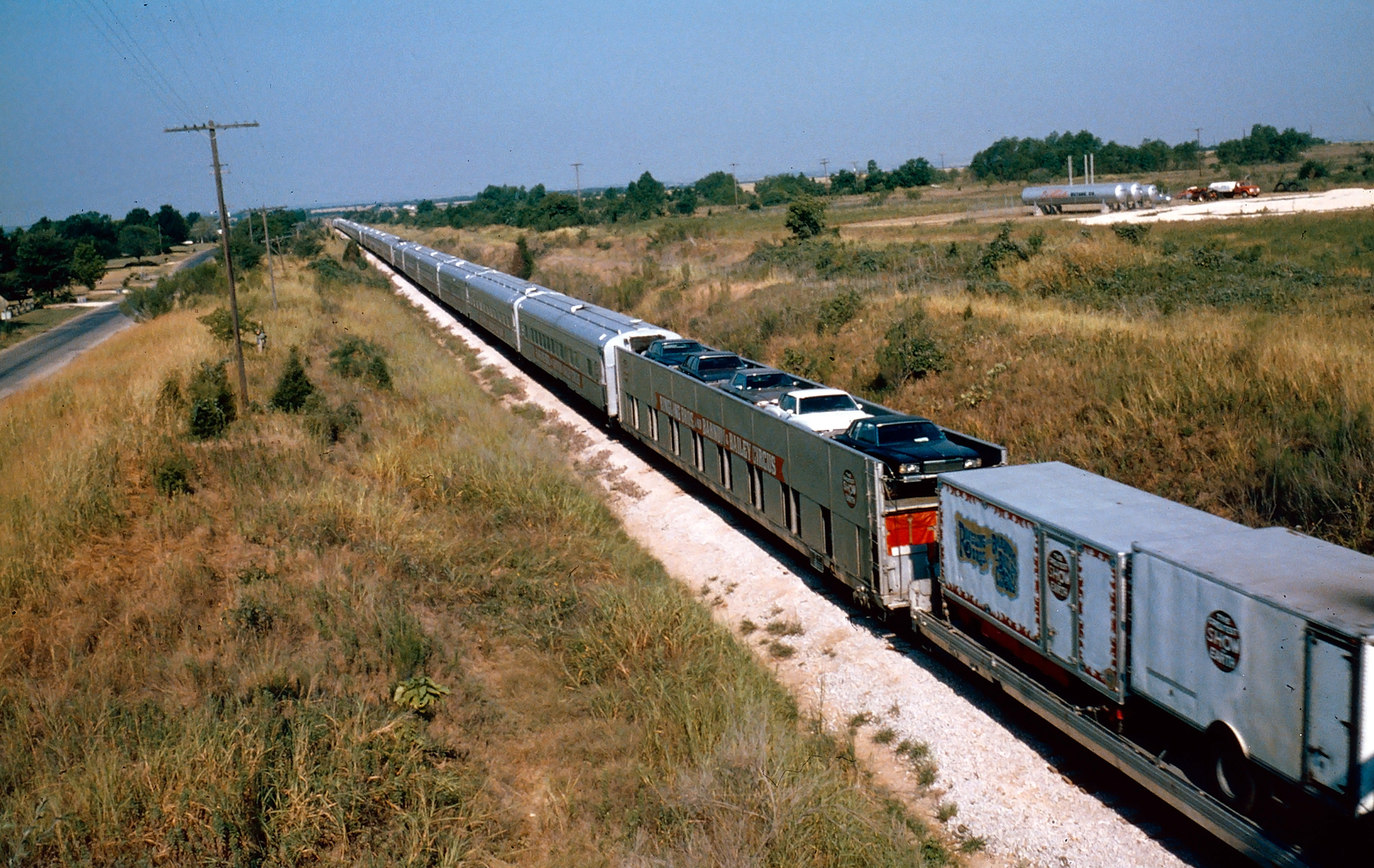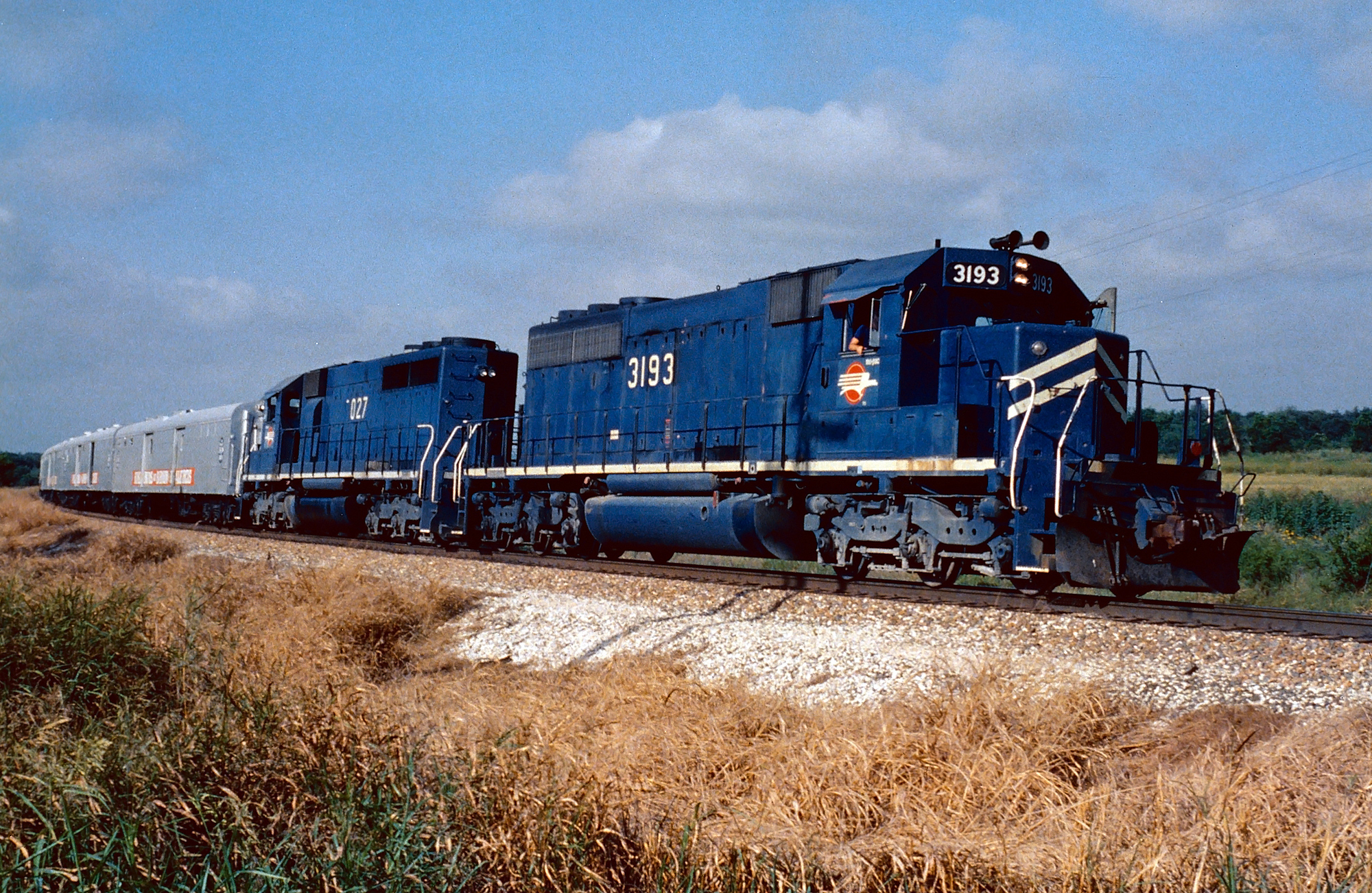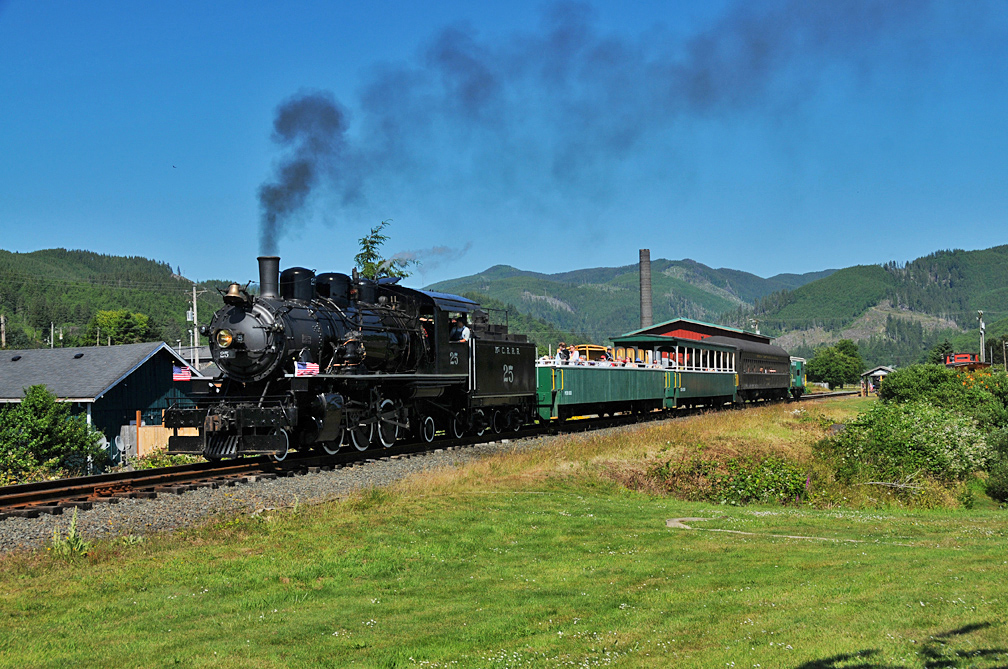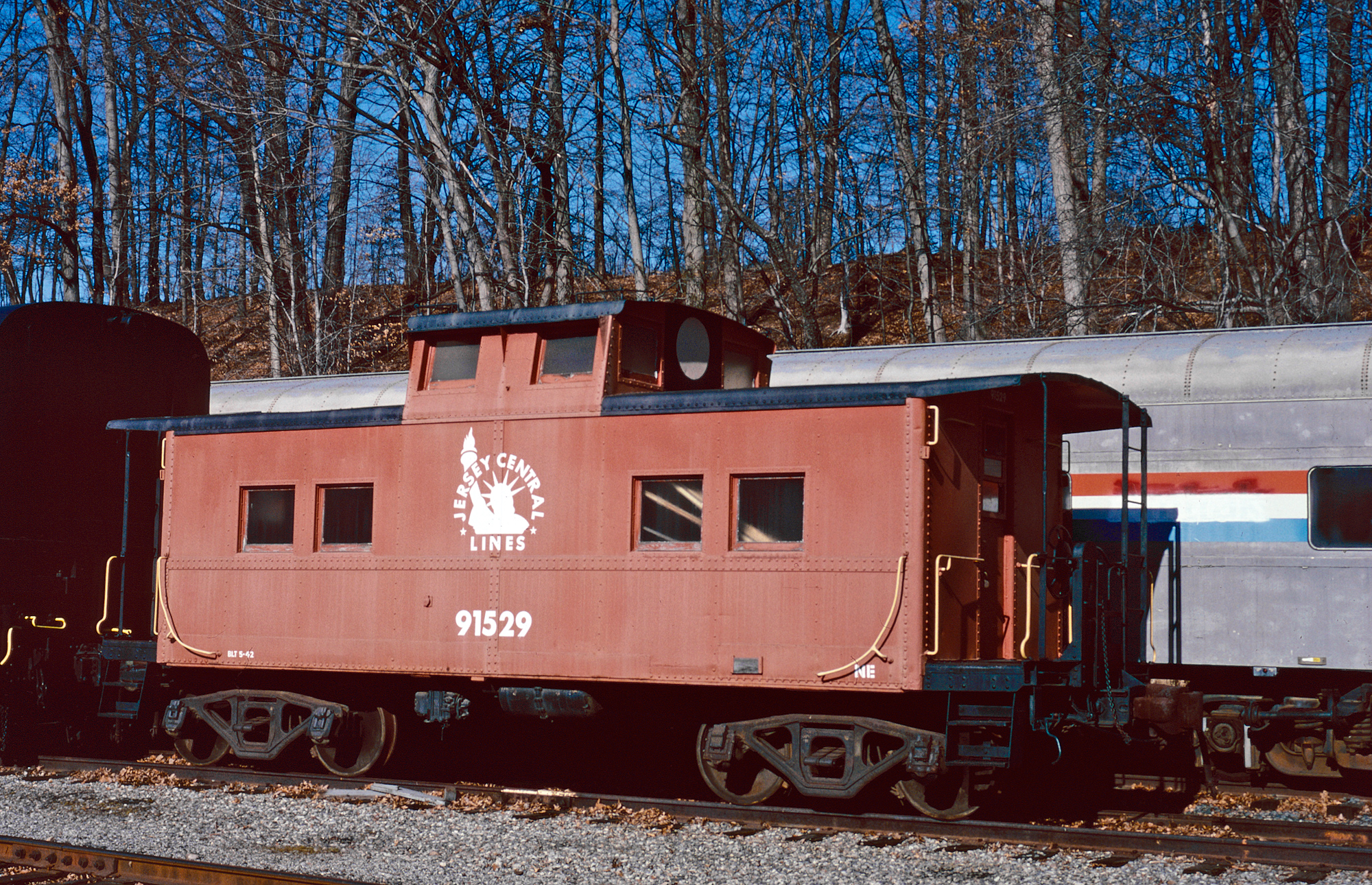The Circus Train: How Such Attractions Reached Distant Cities
Last revised: September 11, 2024
By: Adam Burns
Circus trains, a hallmark of the golden age of American entertainment, revolutionized the logistics of transporting large traveling circuses.
These specialized trains were designed to efficiently move the entire circus, including performers, animals, and equipment, from one town to the next. The advent of the railroad in the late 19th century paved the way for this innovation, making it possible for circuses to expand their reach across vast distances.
Comprising various types of cars, circus trains typically included sleeper cars for performers and crew, flatcars for wagons and tents, and specially designed animal cars.
The meticulous planning involved in these operations ensured a seamless setup and teardown at each location, often transforming empty fields into bustling circus grounds within hours.
One of the most famous examples was the Ringling Bros. and Barnum & Bailey's train, which at its peak could stretch up to a mile long with dozens of cars.
These trains brought the magic of the circus to countless towns and cities, delighting audiences with spectacular performances.
By the mid-20th century, however, the rise of modern entertainment and changing cultural attitudes led to the decline of this storied tradition. Barnum & Bailey's final run in May 2017 marked the end of this unique operation. Despite this, circus trains remain an iconic symbol of a bygone era, reflecting the grandeur and ingenuity of traveling circuses.
 The Ringling Bros. and Barnum & Bailey Circus train running over the Southern Pacific between Elgin and Austin, Texas, circa 1984. Mike Bledsoe photo. American-Rails.com collection.
The Ringling Bros. and Barnum & Bailey Circus train running over the Southern Pacific between Elgin and Austin, Texas, circa 1984. Mike Bledsoe photo. American-Rails.com collection.Ringling Bros. and Barnum & Bailey
The Ringling Bros. and Barnum & Bailey circus train holds an unparalleled place in the annals of American entertainment. Its history, which intertwines with that of the iconic circus, offers an enthralling narrative of human ambition, technological advancement, and cultural transformation.
The journey of this distinctive mode of mobile entertainment is as colorful and dynamic as the performances it carried. The Ringling operation was without question the most famous in the United States, operating from 1872-2017, although there were others.
Origins and Early Development
The roots of the Ringling Bros. and Barnum & Bailey circus begin with two separate entities—the Ringling Bros. Circus and the Barnum & Bailey Circus. Phineas Taylor Barnum, often dubbed the “Greatest Showman,” established the Barnum’s Grand Traveling Museum, Menagerie, Caravan & Hippodrome in 1871.
Around the same period, the Ringling brothers began their circus in 1884. Both entities grew significantly, captivating audiences across America with their lavish displays and marvels.
Transportation was a critical aspect of circus logistics. Initial transportation methods were rudimentary and relied on horse-drawn wagons. However, with the emergence of the railroad, a more efficient and far-reaching mode of transport became feasible.
Recognizing the potential, P.T. Barnum was one of the first showmen to integrate trains into circus logistics - doing so in 1872 - making it possible to cover vast distances previously impractical.
Convergence and the Birth of the Combined Circus
In 1907, the Ringling brothers purchased the Barnum & Bailey Circus following James A. Bailey’s death. For a brief period, they operated the two circuses separately.
However, by 1919, they merged the entities, creating the “Ringling Bros. and Barnum & Bailey Circus,” billed as the “Greatest Show On Earth.” This fusion marked the inception of the circus that would dominate American entertainment for nearly a century.
The combined circus train became a key component of their operations. These trains were meticulously organized, with separate cars for performers, animals, cooking equipment, and supplies. The trains were a marvel of logistics, designed to ensure the swift and efficient movement of the entire circus entourage from one town to another.
Golden Age of the Circus Train
The 1920s through the 1940s represented the golden age of American circuses, and the Ringling Bros. and Barnum & Bailey's train was a spectacle in itself.
The train could extend up to a mile in length, comprising between 60 to 90 cars. These were divided into ‘sections,’ with some reserved for human performers and others for the animals — from elephants to lions — that formed the heart of the show.
Ringling Bros. and Barnum & Bailey’s logistics were exceptional, and the circus train was an operational marvel. Performers and crew slept in Pullman cars, while the cookhouse provided meals for the entire company.
Additionally, there were advance cars that would precede the main train to upcoming show locations to handle advertising and other preparations.
The animal cars, which were often towards the end of the train, were specially designed to cater to the needs of the circus animals.
The elephants, in particular, were critical to the setup and teardown of the big top, the massive tent under which the shows were held. When the train arrived at a new location, complex operations involving hundreds of personnel and animals would ensue, transforming an empty field into a bustling circus ground within hours.
Challenges and Decline
The advent of the Great Depression in the 1930s brought significant challenges. Economic hardship reduced the disposable income of many Americans, causing a drop in attendance at circus performances. Despite these financial strains, the circus train remained in operation, though it faced constant pressure to economize.
World War II further impacted the circus industry. The war effort required significant resources, leading to shortages of both personnel and materials. Gasoline rationing meant that car travel was limited, making the circus train even more vital for transporting the show from town to town.
In the post-war era, new forms of entertainment, such as movies and television, began to erode the popularity of live circus performances. The cultural landscape was changing, and the once-thriving circus industry faced an increasingly uncertain future. By the 1950s and 1960s, many smaller circuses went out of business, unable to compete with the burgeoning array of entertainment options.
Despite these challenges, the Ringling Bros. and Barnum & Bailey circus train persevered, although the decline was inexorable. The train's operations were streamlined, reducing the number of cars and optimizing logistics. However, the cultural shift towards more modern forms of entertainment continued to erode the traditional circus audience.
Modern Era and Conclusion
The Ringling Bros. and Barnum & Bailey circus train experienced a resurgence of sorts in the late 20th century, as a nostalgic reminder of a bygone era. Efforts were made to update the circus’s appeal, both in terms of performances and operational efficiency.
However, mounting public concern over the treatment of circus animals, particularly elephants, cast a long shadow over the operations. These concerns led to changing regulations and increased scrutiny, further complicating the logistics of running a large-scale circus.
In January 2017, the Ringling Bros. and Barnum & Bailey Circus announced plans to close, citing declining ticket sales and high operating costs.
The train concluded its final run on May 8, 2017 and on May 21st the circus performed its final show, bringing an end to over a century of entertainment history. The circus train, which had been central to its operations for so long, was retired.
Despite its retirement, the legacy of the Ringling Bros. and Barnum & Bailey circus train endures. It remains a symbol of a remarkable era in American history, reflecting the ingenuity and ambition of those who brought entertainment to millions of people across the country.
The story of the circus train is a testament to the transformative power of logistics and technology in the service of art and spectacle, creating cherished memories that have lasted generations.
Schlitz Circus Train
The Schlitz Circus Train, a marvel of American railroad and entertainment history, is a fascinating chapter in the chronicles of 20th-century spectacles.
Sponsored by the Joseph Schlitz Brewing Company, the train was originally created to bring the magic of the circus to cities across America in the 1950s. The brainchild of noted circus historian Richard H. Reynolds, the train was meticulously restored to showcase vintage circus wagons from the early 1900s.
The Schlitz Circus Train represented not only a poignant tribute to the golden age of traveling circuses but also served as a living museum, bringing nostalgic joy to circus enthusiasts of all ages.
The train exhibited beautifully restored wagons that once paraded through the streets, drawn by teams of horses, heralding the arrival of the circus. In 1965, the train embarked on its most famous journey, traveling from Baraboo, Wisconsin, to Milwaukee. Interestingly, Burlington 2-8-2 #4960 famously led the train during the railroad's popular steam program.
This trip not only rekindled public interest in circus history but also played a pivotal role in fostering a new appreciation for traditional circus arts. The Schlitz Circus Train, with its vibrant history and spectacular display, remains an iconic symbol of America's rich circus heritage.
Royal American Shows
The Royal American Shows Circus Train, a magnificent symbol of mid-20th-century American entertainment, was one of the largest and most elaborate circus trains in history.
Operating primarily from the 1920s to the 1970s, it exemplified the logistical prowess and splendor associated with traveling circuses and carnivals. This colossal train could stretch over a mile in length, consisting of nearly 80 cars that carried everything needed for a self-contained, traveling amusement empire.
Founded by Carl Sedlmayr, the Royal American Shows were renowned for their vibrant midway filled with rides, games, sideshows, and grandstand performances.
 Missouri Pacific SD40-2 #3193 and SD40 #3027 have the "Ringling Brothers and Barnum & Bailey Circus Train" near Kyle, Texas, circa 1982. Mike Bledsoe photo. American-Rails.com collection.
Missouri Pacific SD40-2 #3193 and SD40 #3027 have the "Ringling Brothers and Barnum & Bailey Circus Train" near Kyle, Texas, circa 1982. Mike Bledsoe photo. American-Rails.com collection.The train ensured that this mobile wonderland could move efficiently from town to town, delivering joy and excitement to millions. It featured sleeper cars for performers and crew, flatcars for rides and equipment, and specialized cars for the elaborate, tented venue.
The Royal American Shows Circus Train was more than just transport; it was a moving testament to the skill and dedication involved in orchestrating such grand operations.
However, the rise of permanent amusement parks and shifting entertainment tastes led to its decline by the 1970s. Despite this, the legacy of the Royal American's operation endures as a vivid chapter in the history of American fairs and traveling shows.
Recent Articles
-
Oregon Railroad Museums: A Complete Guide
Apr 25, 25 03:11 PM
With its rich tapestry of scenic landscapes and profound historical significance, Oregon possesses several railroad museums that offer insights into the state’s transportation heritage. -
North Carolina Railroad Museums: A Complete Guide
Apr 25, 25 02:56 PM
Today, several museums in North Caorlina preserve its illustrious past, offering visitors a glimpse into the world of railroads with artifacts, model trains, and historic locomotives. -
New Jersey Railroad Museums: A Complete Guide
Apr 25, 25 11:48 AM
New Jersey offers a fascinating glimpse into its railroad legacy through its well-preserved museums found throughout the state.

